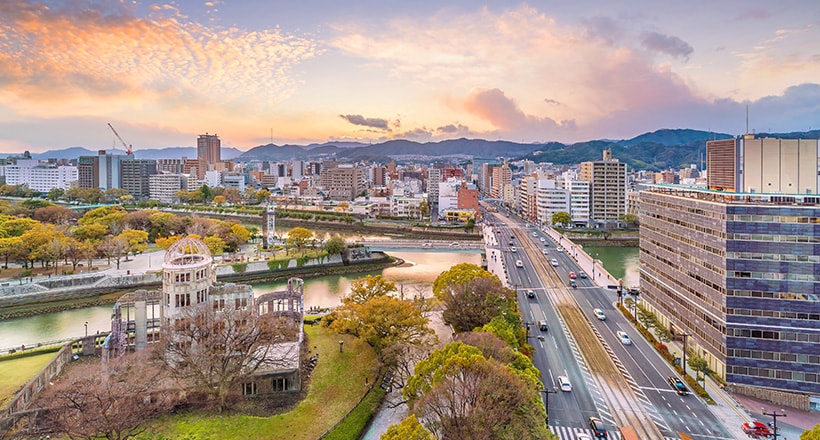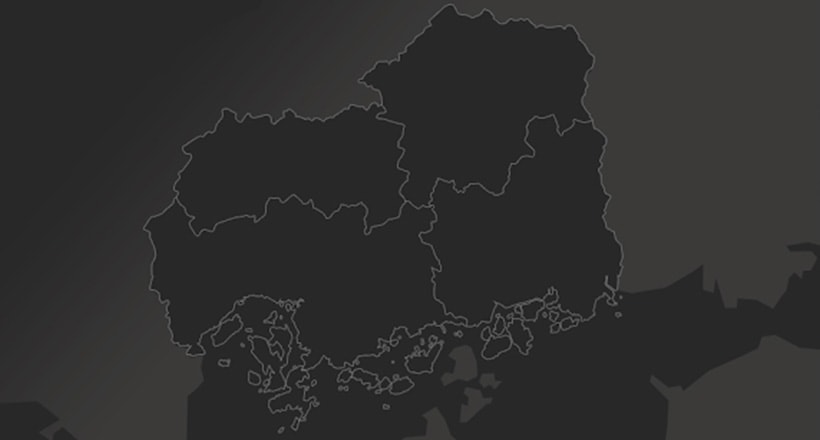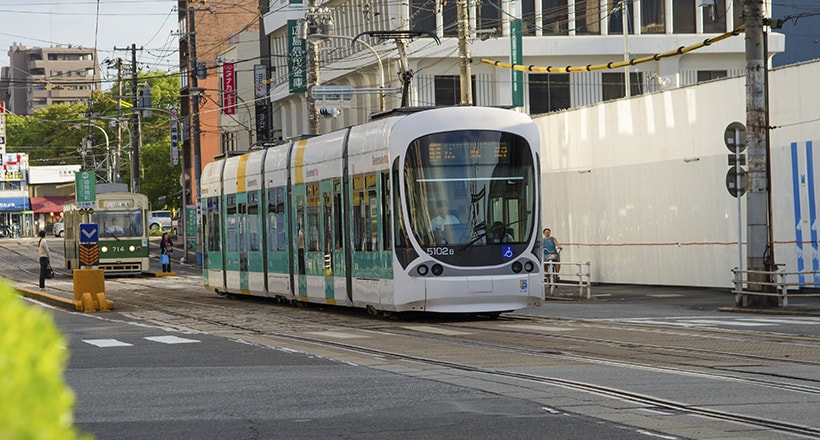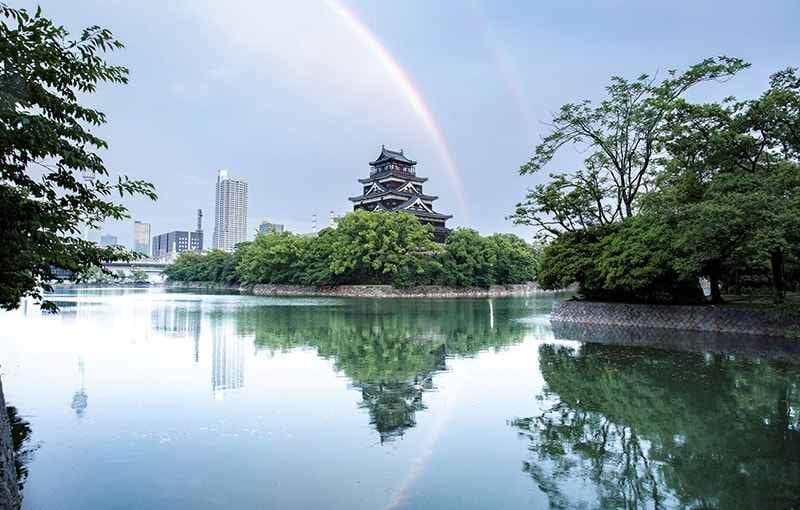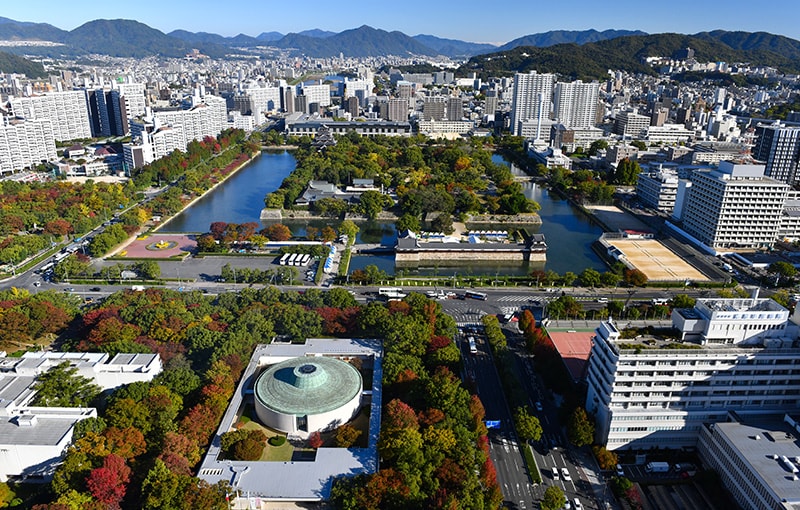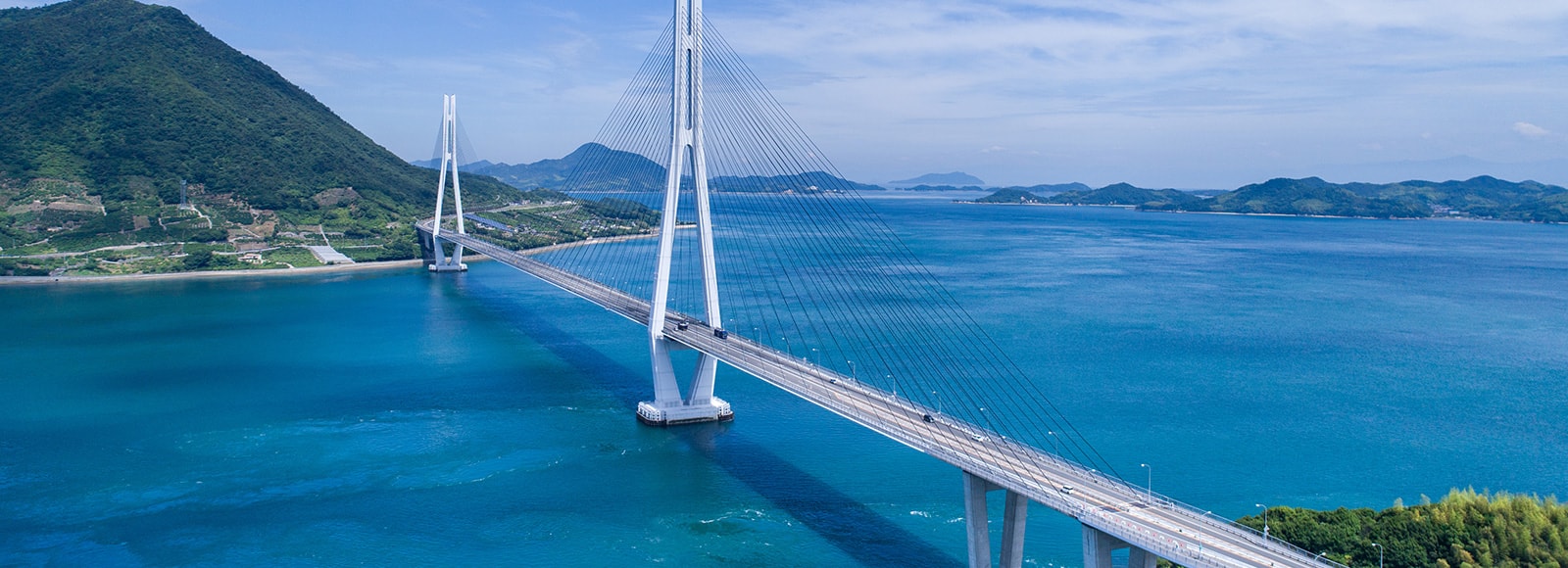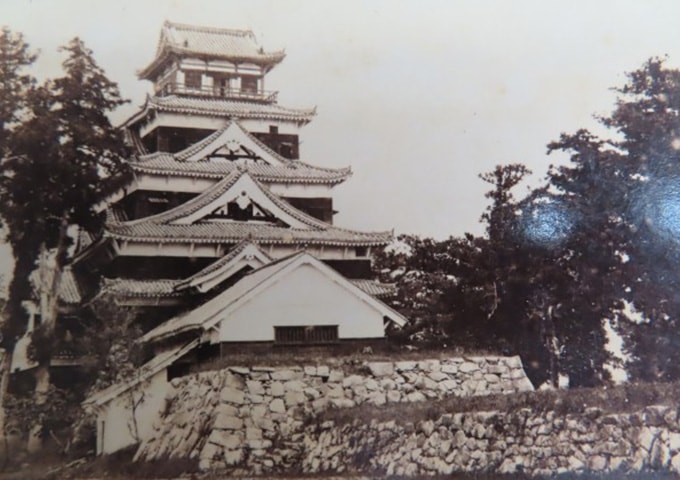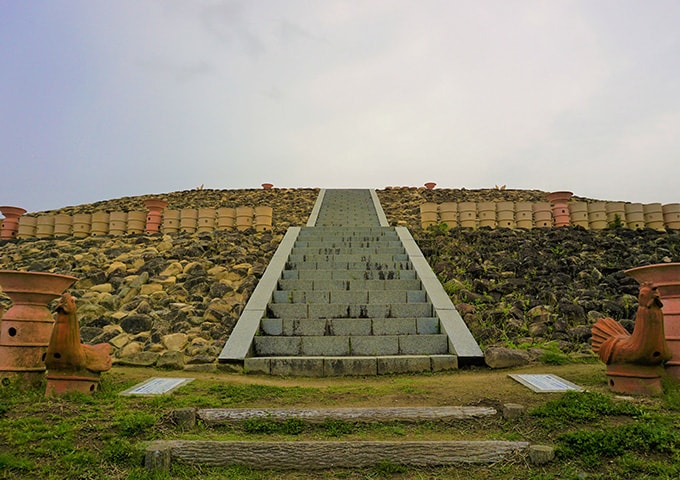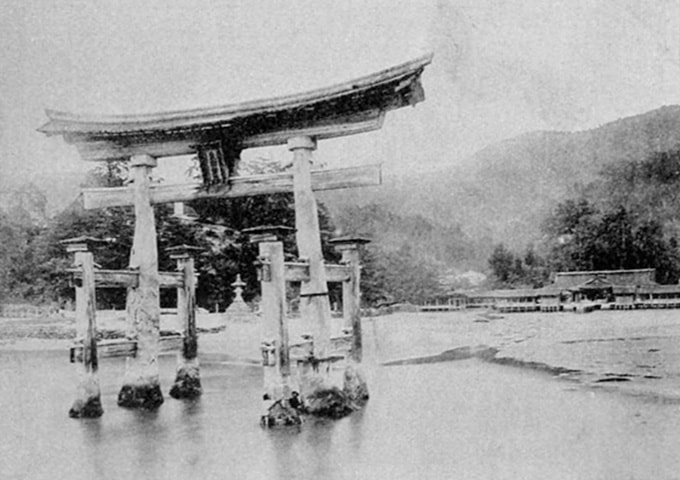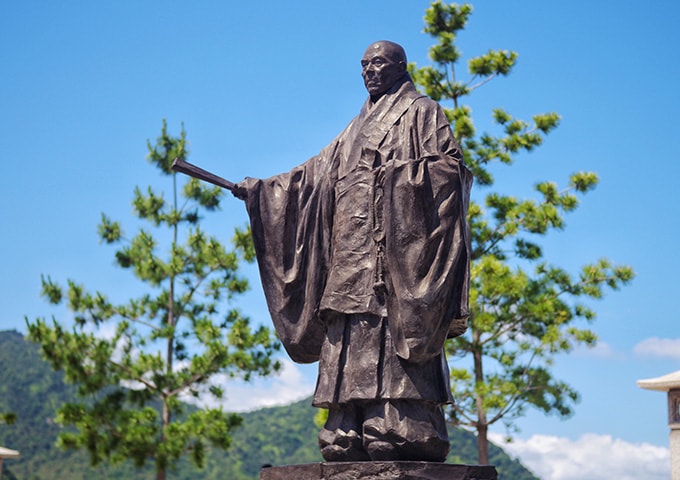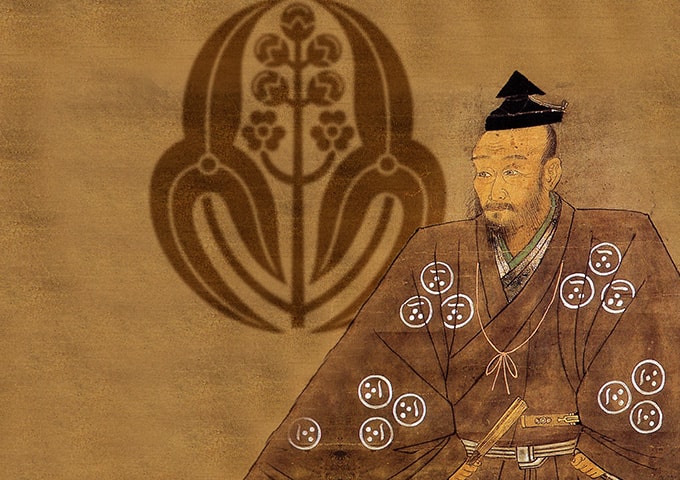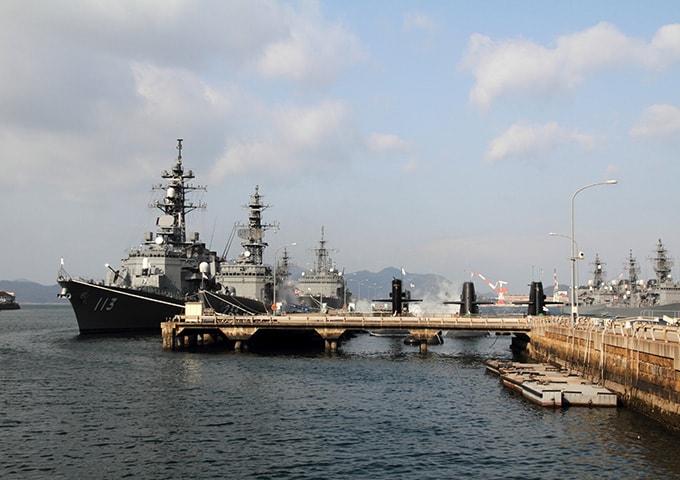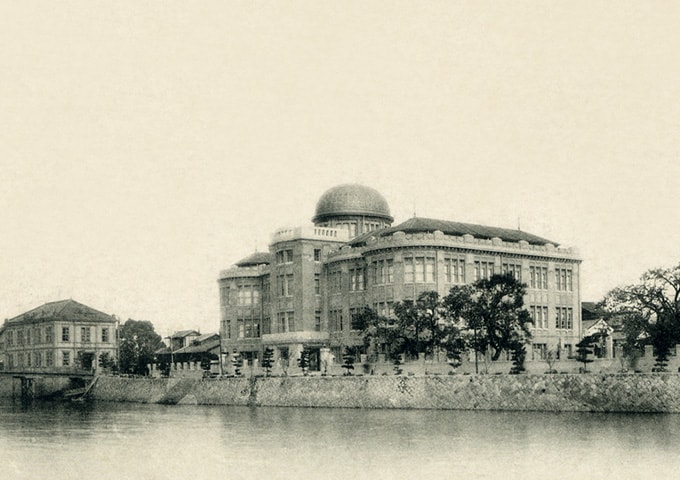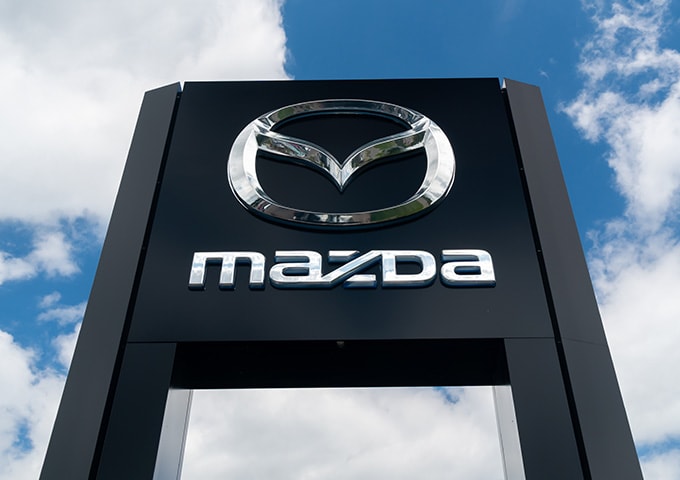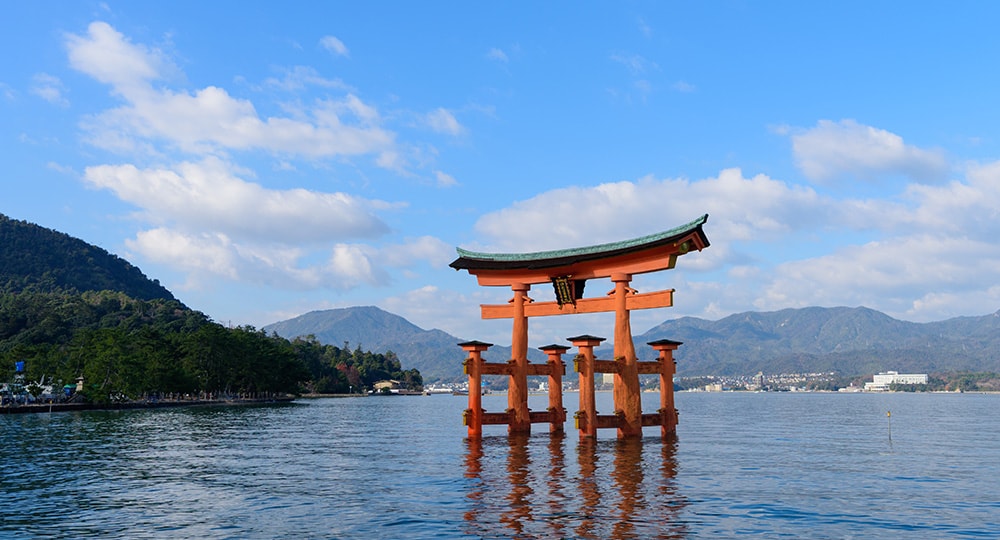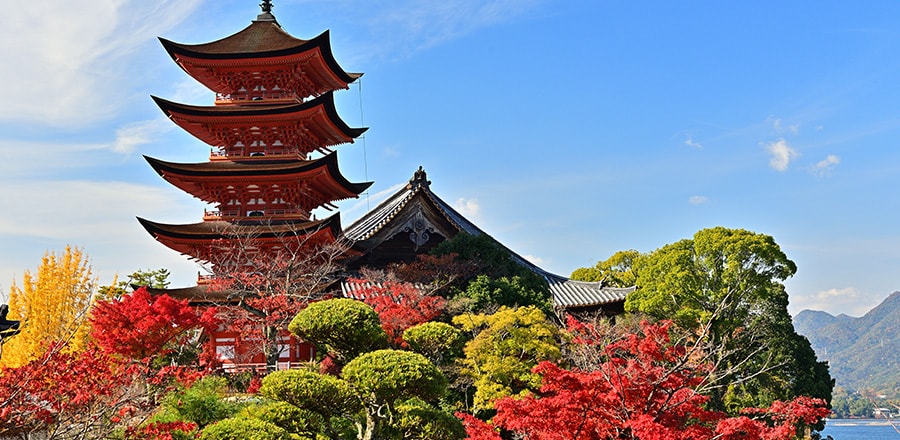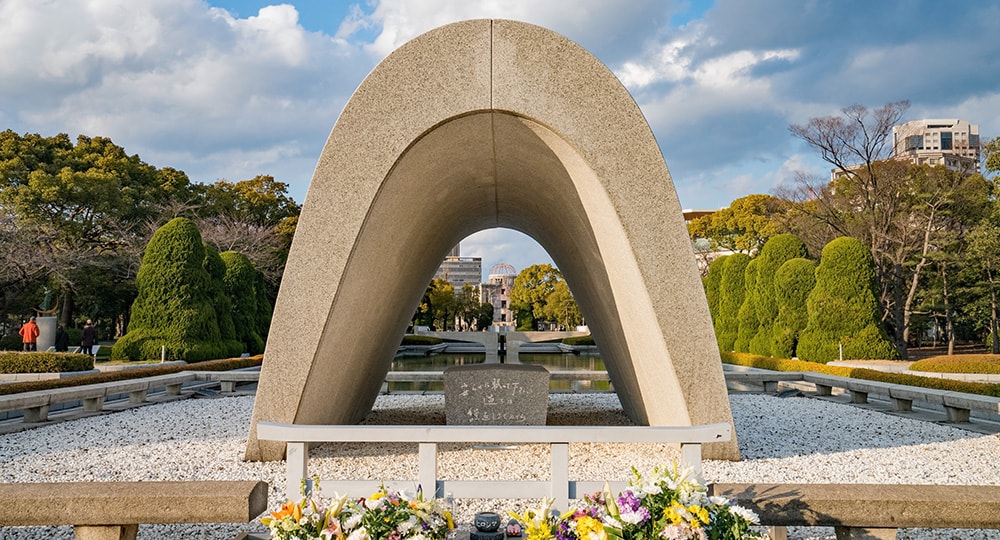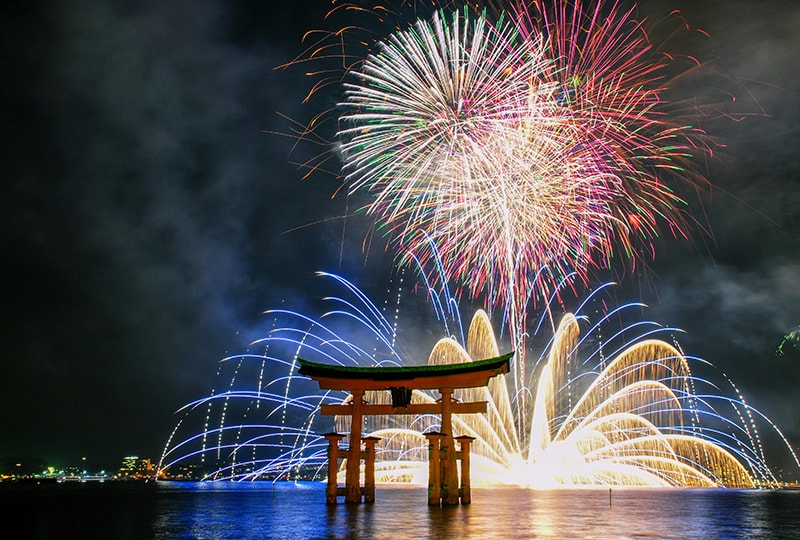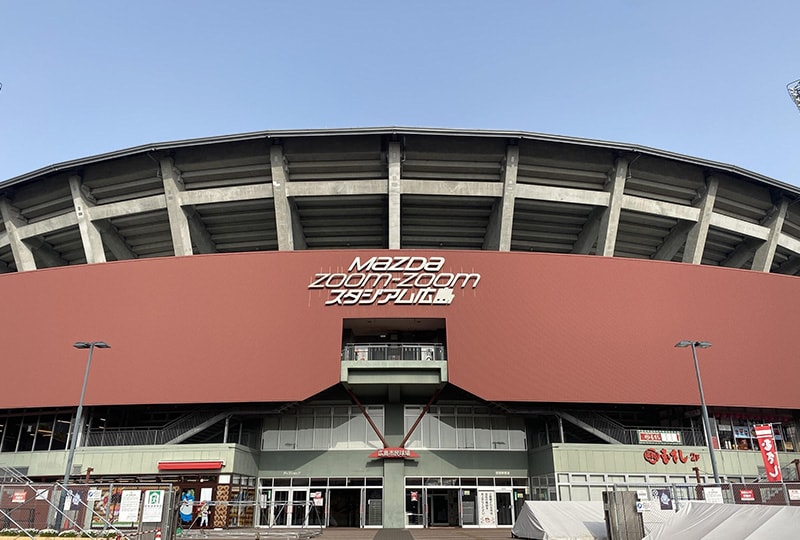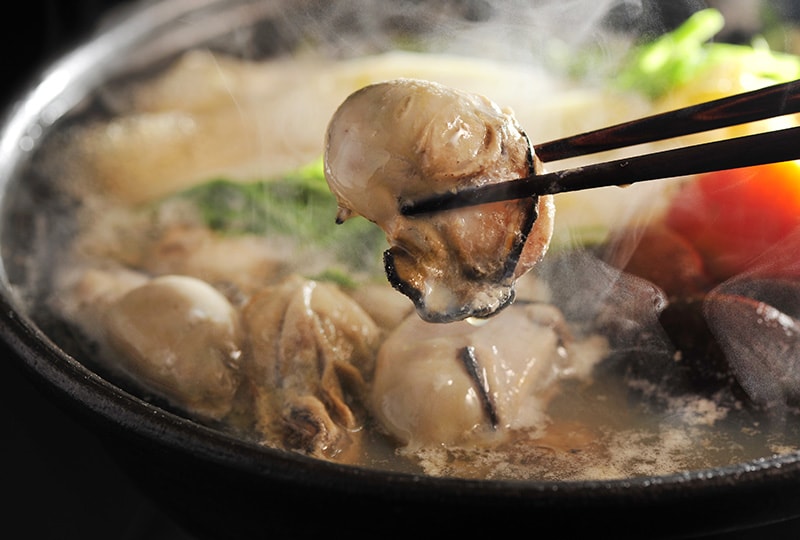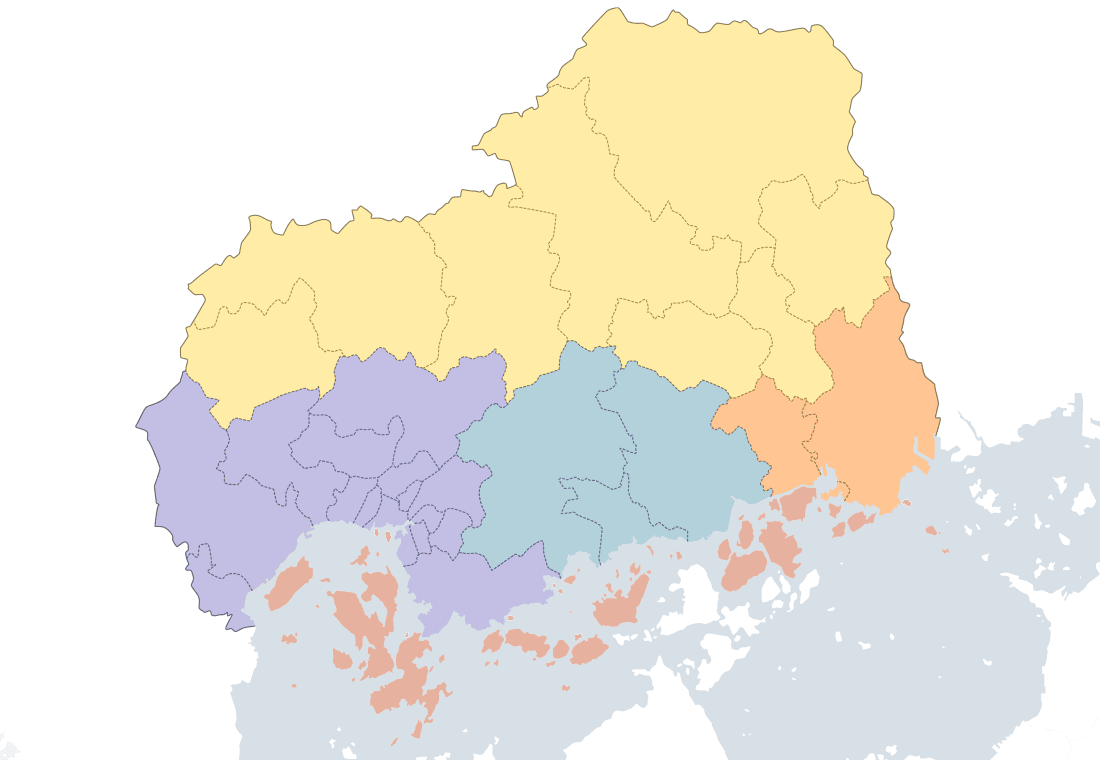A-bomb Dome
Overview
The Atomic Bomb Dome is an historic structure located in the center of Hiroshima City, and has been declared a World Heritage Site as a monument to the horrific damage caused by the atomic bomb that was dropped on the city on August 6, 1945.
Prior to the bombing, the Atomic Bomb Dome was the Hiroshima Prefectural Industrial Promotion Hall, which displayed a variety of Hiroshima products. It was designed by the Czech architect Jan Letzel, and its European appearance, which was unusual in Japan at the time, became a hot topic of conversation. The Hiroshima Prefectural Industrial Promotion Hall has records of various product fairs, and was famous for being the first place in Japan to produce and sell baumkuchen cakes.
However, due to the damage caused by the atomic bomb, the outer walls of the building collapsed in an instant and the dome was reduced to a miserable state, with only the glass windows remaining in their frames.
The Atomic Bomb Dome is about a two-minute walk from the Hiroshima Electric Railway Atomic Bomb Dome tram stop. It’s also within a 10-minute walk of Hiroshima Castle and Nagarekawa (the most popular entertainment district in the Chugoku region), and other tourist attractions in central Hiroshima.
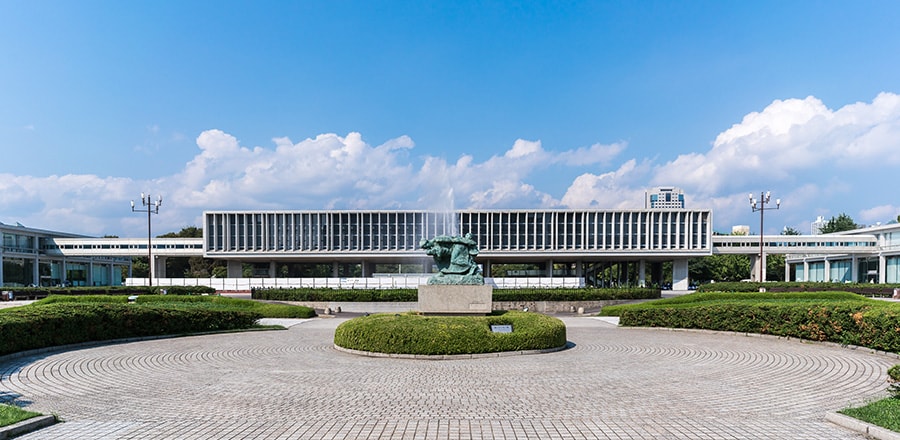
Main Attraction
The area around the Atomic Bomb Dome has been developed as the Peace Memorial Park, with more than 50 facilities and memorials related to the atomic bombing. The Peace Memorial Park covers an area of approximately 122,100 square meters. Approximately 1.7 million tourists from Japan and abroad visit the park every year, which is full of lush greenery and nature.
The Hiroshima Peace Memorial Museum is one of the most important facilities in the park. In order to convey the horror of the atomic bombing to the present day, the museum displays a variety of materials, including the belongings of A-bomb survivors and a diorama that recreates the scene immediately after the bombing.
The Cenotaph for the Atomic Bomb Victims is located in the center of the park. The monument houses a list of approximately 320,000 names of the A-bomb victims, both domestic and foreign, who were killed in the bombing.
There are also various other cenotaphs, including the Aogiri tree, which survived the bombing without burning, and the Children’s Peace Monument, a monument for child survivors of the atomic bombing.
The Peace Memorial Ceremony is held every year on August 6 in Peace Memorial Park, which is attended by dignitaries from Japan and abroad.
The former Hiroshima Municipal Baseball Stadium, home of the Hiroshima Toyo Carp professional baseball team (now relocated to MAZDA Zoom-Zoom Stadium Hiroshima), is located near the Hiroshima Electric Railway tram stop in front of the Atomic Bomb Dome, and a monument to a national championship still stands.
In addition, the Orizuru Tower commercial complex opened in 2016. There are various facilities such as cafes, souvenir shops, and an observation deck, and the area is crowded with many tourists.

